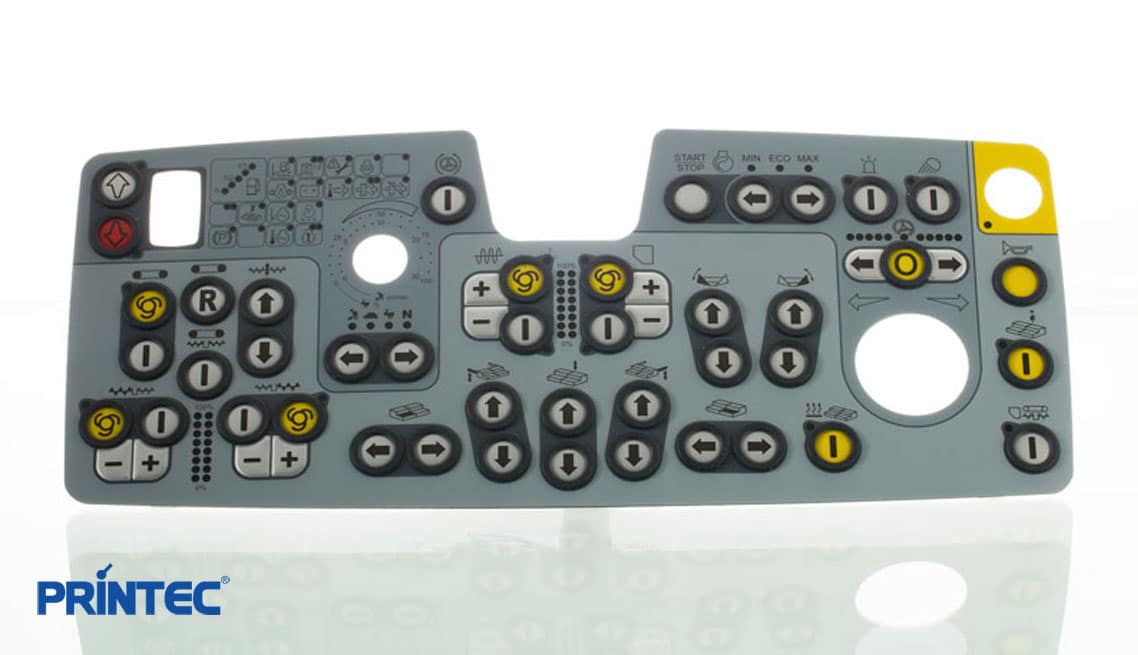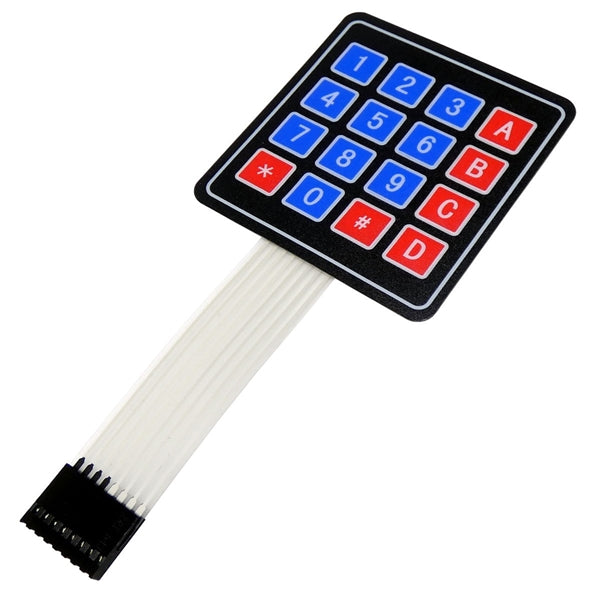Many businesses depend on a skilled membrane switch manufacturer for custom solutions.
Many businesses depend on a skilled membrane switch manufacturer for custom solutions.
Blog Article
Everything About Membrane Switch: Understanding Its Design and Functionality
When you believe about the control interfaces in modern gadgets, membrane layer buttons often come to mind. Let's explore what collections membrane layer switches over apart from various other control systems.
What Are Membrane Layer Switches?

Their seamless nature makes them simple to clean and resistant to dirt and wetness, a crucial function in many atmospheres. Membrane switches can also be tailored relating to shape, size, and graphics, enabling manufacturers to develop special interfaces customized to particular products. And also, they're light-weight and slim, which aids in lessening the overall bulk of tools. Generally, membrane buttons play a considerable role in improving customer experience throughout a wide array of applications.
Just How Membrane Layer Switches Over Work
When you push a key on a membrane switch, it triggers a straightforward yet efficient mechanism. The leading layer, often constructed from versatile material, presses down onto a conductive layer under it. This activity bridges the void between conductive traces, completing an electric circuit. As quickly as the circuit closes, it sends out a signal to the gadget's controller, which interprets your input.
You'll see that the tactile comments varies based on the switch style, providing either a soft click or a more obvious action. As soon as you release the secret, the membrane returns to its initial placement, resuming the circuit and stopping the signal. This procedure happens practically instantaneously, guaranteeing a responsive customer experience.
Membrane buttons are popular as a result of their toughness and resistance to dust and dampness, making them suitable for numerous applications, from family home appliances to medical tools. Comprehending this procedure assists you value their prevalent usage.
Secret Elements of Membrane Buttons
Recognizing the essential parts of membrane buttons is essential for understanding their performance and design. At the core, you'll find the visuals overlay, which provides the visual user interface for customers. Below that, there's a spacer layer that divides the circuit layers, guaranteeing that they do not make call until pushed. The circuit layer is where the magic happens; it includes conductive traces that finish the circuit when you push the button. Another crucial element is the glue support, permitting the switch to stick to surface areas securely. Finally, the protective layer shields versus ecological aspects and use, extending the switch's lifespan. Each element plays a considerable duty in ensuring trusted performance and user communication. By understanding these components, you'll obtain understanding into just how membrane switches over operate and their significance in different applications.
Products Used in Membrane Change Design
The efficiency and resilience of membrane switches over greatly rely on the materials used in their design. You generally come across polyester and polycarbonate as key substrates because of their excellent stamina and flexibility. These materials resist scrapes and chemicals, making them excellent for demanding settings.
The conductive layers commonly make use of silver or carbon, chosen for their dependability and conductivity. membrane switch manufacturer. Silver supplies remarkable efficiency, while carbon is an economical choice. For the overlay, you could take into consideration a matte or shiny surface, relying on your aesthetic requirements and customer experience
Adhesives play an important function as well; they bond layers safely and ensure longevity. Clicking Here Make sure to pick adhesives that hold up against environmental elements like temperature and humidity. Ultimately, do not ignore the importance of a great printing method for graphics, as it enhances both functionality and aesthetic appeal. Choosing the right products will guarantee your membrane layer button stands the examination of time.
Style Considerations for Membrane Switches
While designing membrane buttons, it's crucial to take right into account various aspects that influence their capability and individual experience. Beginning by concentrating on the design and button dimension; ensure they're user-friendly and simple to navigate. Consider the responsive comments you desire to provide-- will individuals need an obvious click or a softer touch? Additionally, think of the materials you'll make use of, as they'll influence durability and aesthetics.
Do not ignore the graphic style; clear labeling and shade contrast are significant for visibility. Confirm your layout accommodates ecological variables, like wetness or temperature level variations, which might influence performance. Lastly, bear in mind the significance of screening models with real individuals to collect comments and make necessary adjustments. This iterative process assists you improve the design, confirming it satisfies both useful and aesthetic needs successfully. By carefully taking into consideration these aspects, you'll develop a membrane layer button that boosts use and complete satisfaction.
Applications of Membrane Layer Switches
Membrane switches are versatile parts visite site found in various applications, from industrial devices to consumer electronic devices. You'll see their impact in makers that call for durable interfaces and in tools that gain from smooth layouts. Comprehending these applications helps you appreciate the capability and practicality of membrane layer switches in day-to-day technology.
Industrial Devices Usage
When you're looking to boost the performance of industrial equipment, membrane layer switches use a reputable solution that combines durability with straightforward style. These buttons are ideal for rough atmospheres, supplying resistance to dirt, dampness, and chemicals. You'll discover them in control panels for producing devices, a/c systems, and medical gadgets, where accuracy and responsiveness are crucial. Their low account indicates they fit effortlessly into numerous equipment, conserving valuable space while keeping ease of use. With adjustable graphics and backlighting choices, you can create an instinctive interface for operators, improving performance and safety. Plus, their long life-span minimizes maintenance prices, making them a wise financial investment for your industrial applications. Embrace membrane buttons to streamline your operations and improve total performance.
Customer Electronic Devices Combination
In the domain name of consumer electronic devices, membrane switches play a crucial function in boosting individual communication and device performance. Membrane switches also guarantee longevity and resistance to dust and wetness, extending the life expectancy of your electronics. By selecting membrane layer switches, you boost not just the capability however additionally the design of your devices, making day-to-day communications smooth and enjoyable.
Benefits and Drawbacks of Membrane Layer Switches
While membrane switches offer a variety of benefits, they also come with some drawbacks that you ought to think about. One considerable advantage is their compact layout, making them excellent for space-constrained applications. They're likewise affordable, providing a sturdy option with a low production expense. In addition, their seamless surface area is simple to clean, improving hygiene in environments like hospitals.

Nonetheless, there are negative aspects. Membrane buttons can have a shorter life-span compared to mechanical switches, especially under hefty use. They can likewise be less tactile, which may impact user comments throughout operation. Furthermore, if harmed, fixing them can be tough and usually calls for full replacement. Ultimately, their level of sensitivity to severe temperatures and ecological problems might restrict their performance in specific setups. Balancing these advantages and disadvantages will aid you determine if membrane buttons are the right suitable for your task.
Regularly Asked Inquiries
How Lengthy Do Membrane Switches Commonly Last?
Membrane switches commonly last between 5 to one decade, depending upon usage and environmental problems. You'll want to examine elements like wear, direct exposure to dampness, and temperature level fluctuations to gauge their long life effectively.
Can Membrane Layer Switches Be Customized for Particular Styles?
Yes, you can personalize membrane layer buttons to fit specific styles (membrane switch manufacturer). You'll have the freedom to choose shades, forms, and layouts that match your task's requirements, ensuring they blend flawlessly with your overall visual
What Is the Price Range for Membrane Layer Switch Manufacturing?
The cost range for membrane layer switch manufacturing commonly drops in between $1 and $10 per unit, depending on aspects like design complexity, amount, and materials. You can get quotes from manufacturers to locate the most effective choice.

Are Membrane Changes Water-proof or Immune?
Membrane layer buttons can be made to be waterproof or immune, relying on products used and building techniques. If you require them click resources for damp settings, assure you specify those demands throughout the style procedure.
How Do Membrane Switches Over Contrast to Traditional Switches?
Membrane buttons are typically thinner and a lot more versatile than conventional switches, using a streamlined design. They're commonly less complicated to clean and integrate, however could not supply the responsive comments you're used to with mechanical choices.
Conclusion

Report this page